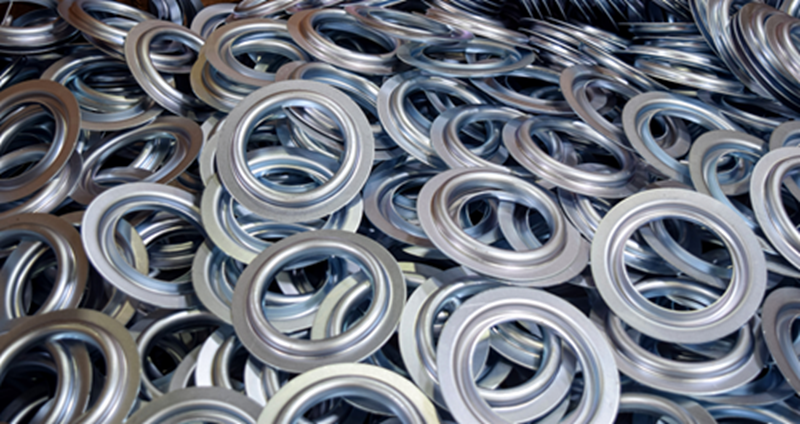Part Shape Matters
HOW SHAPE AFFECTS PLATING
Part shape can greatly affect the steps and attention needed during finishing. It can also determine whether rack or barrel plating methods are used and if any pre- or post- plating treatments are required.
Parts with the following characteristics should be discussed with your Plater ahead of time to ensure quality plating with minimal lead times.
INTERLOCKING COMPONENTS
Parts such as open springs, hooks or U-shaped components are prone to tangling during barrel plating.
Part size might be sufficient for barrel processing, but these types of parts receive a more consistent finish when processed for rack plating. Interlocked parts are labor intensive to separate and can create plating voids on surfaces that aren’t exposed.
Rack plating will be more costly upfront but will save time and cost overall by avoiding the need to re-work or separate parts after plating.
TUBING I.D.
Electroplating does not typically coat the inside surface of tubing. It is important that your plater employs methods that will fully remove existing rust from the I.D. without creating additional rust inside the tube during the process.
Under certain conditions, a sealer or rust preventative may be applied to the inside after plating to prevent it from corrosion.
COMPLEX PARTS
Intricate parts with multiple bends, holes, recesses, fittings, etc. can be plated but typically require extra attention and handling to achieve adequate thickness without over-plating.
FLAT OR NESTABLE PARTS
Parts that are lightweight and flat or that nest with each other easily, are likely to stick together during barrel plating. This can result in plating voids or appearance inconsistencies.
Parts with these features should be considered for rack plating to ensure proper plating coverage.
Gatto Industrial Platers has the experience and capacity to consistently meet your expectations. Contact us today for a quote.
